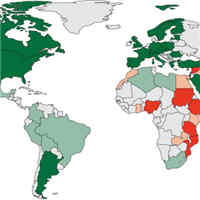Casemix, management, and mortality of patients receiving emergency neurosurgery for TBI
thelancet.com
Patients receiving emergency neurosurgery for traumatic brain injury (TBI) differed considerably in their admission characteristics and management across human development settings. Level of human development was associated with mortality. Substantial opportunities to improve care globally were identified, including reducing delays to surgery.
Between-hospital variation in mortality suggests changes at an institutional level could influence outcome and comparative effectiveness research could identify best practices.
Our study included 1,635 records from 159 hospitals in 57 countries, collected between Nov 1, 2018, and Jan 31, 2020. 328 (20%) records were from countries in the very high HDI tier, 539 (33%) from countries in the high HDI tier, 614 (38%) from countries in the medium HDI tier, and 154 (9%) from countries in the low HDI tier.
The median age was 35 years, with the oldest patients in the very high HDI tier and the youngest in the low HDI tier.
The most common procedures were elevation of a depressed skull fracture in the low HDI tier, evacuation of a supratentorial extradural haematoma in the medium HDI tier and high HDI tier, and evacuation of a supratentorial acute subdural hematoma in the very high HDI tier.















